|
|||||||||||||||||||||||||||||||||||||||||||||||||||||||||||||||||||||||||||||||||||||||||||||||||||||||||||||||||||||||||||||||||||||||||||||||||||||||||||||||||||||||||||||||||||||||||||||||||||||||||||||||||||||||||||||

|
|||||||||||||||||||||||||||||||||||||||||||||||||||||||||||||||||||||||||||||||||||||||||||||||||||||||||||||||||||||||||||||||||||||||||||||||||||||||||||||||||||||||||||||||||||||||||||||||||||||||||||||||||||||||||||||
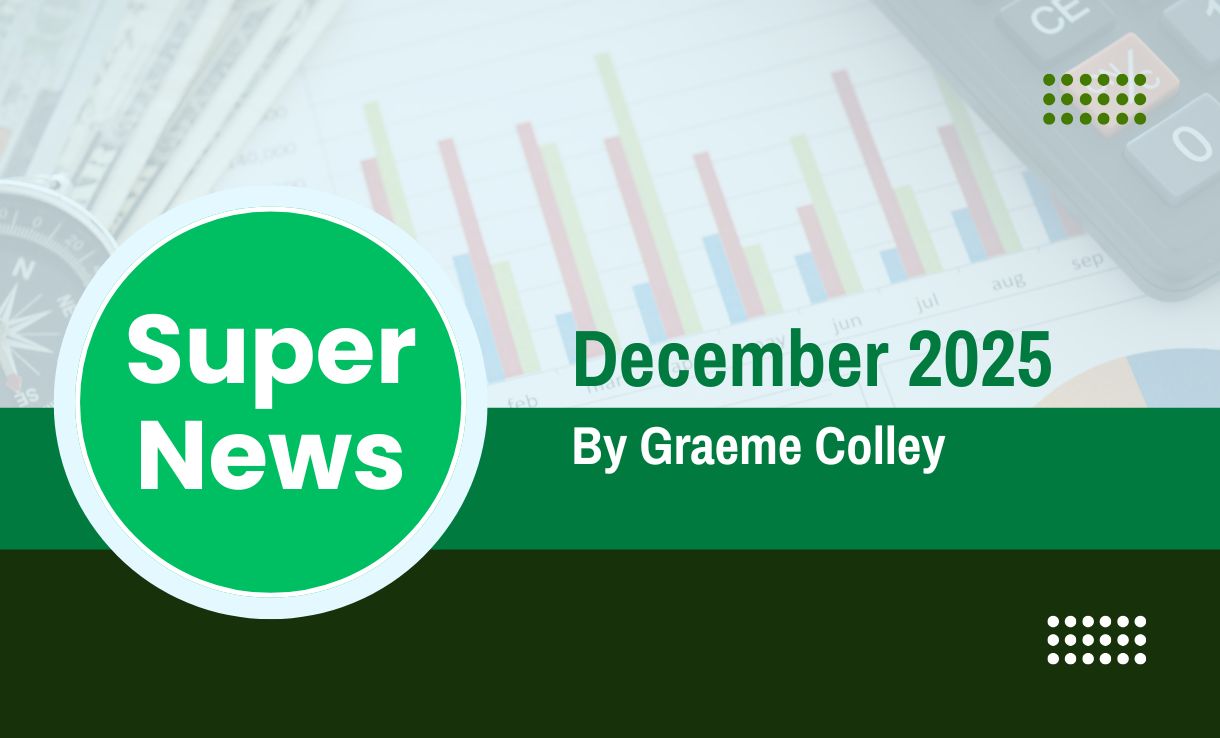
Read the latest updates from Graeme Colley, a respected educator, policy advisor, and technical expert with over 30 years' experience in taxation and superannuation.
In Graeme’s final update of 2025 – he reflects back on 2025 while adding some thoughts to what 2026 may hold.
Welcome to the end of another year and our last newsletter for 2025. This year has given us some possible changes to super, rulings from the regulators and greater obligations for super fund auditors.
But seeing it’s the festive season and a time of giving, why not give a gift that lasts the test of time, like super. Give yourself a Christmas present by making personal contributions to super, increasing your salary sacrifice or helping family members boost their retirement savings. While contributions to super may not have an immediate impact, they may actually give a substantial long-term benefit.
When looking back at the year, the main super issues centre on maintaining good fund administration. This includes making sure pensions are paid correctly and that auditors carry out
their professional duties properly.
An important change to anyone receiving a pension is to make sure that at least the minimum amount is paid. Failure to meet this requirement results in the pension ceasing from the start of that financial year, and all payments being treated as lump sums. Anyone wishing to recommence the pension must go through the process of starting a new pension in the next financial year with entirely new documents as well as calculations.
Underpaying the pension means additional income tax for the fund, as the amount supporting the pension will be treated as being in the accumulation phase for the year of the underpayment. Also, there may be transfer balance cap issues when the pension is stopped and if a new pension commences. One good way of making sure at least the minimum amount is paid can be to arrange for direct debits from the fund accounts to the pensioner. That way, there is a greater risk of the pension complying with the rules.
For auditors, this year provided a number of salient lessons from the regulators and the courts as they took a tougher line on the need to maintain records and gather appropriate evidence in support of the auditor’s conclusions. Failure to meet these requirements resulted in many auditors being disqualified to audit an SMSF.
If you’ve been in this position before and are looking to avoid this in 2026, you should consider speaking to the team at Cloudoffis, whose technology helps maintain records in the cloud.
The reannouncement of Division 296 tax on the increase in super balances above $3 million raised it’s head again. However, changes were made due to the reaction of the public and professional associations. The result was a rework of the basic proposed rules to include a second threshold of $10 million, indexation of the thresholds as well and including only realised gains in the calculation.
It is expected that the Division 296 proposal will show its head again early next year and be passed in time for it to commence on 1 July 2026. It will be interesting to see whether it will make it into law and how the changed proposal will operate.
Unlike the Div 296 tax, Payday Super is law and will commence from 1 July 2026. That legislation requires employers to pay super contributions at the same time as an employee’s salary and wages. In view of the effort required by employers to upgrade their payroll systems, the legislation provides a transitional period to comply with the new law. A draft of the ATO’s compliance approach in the first year of Payday Super for the 2026/27 financial year is published in PCG 2025/D5.
So summing up, it’s been another challenging yea,r and next year looks like it will be no different as we do our best to comply with the continuous changes in super. All the best for the holiday season.
Whether your practice specialises in auditing or offers a full suite of accounting and advisory services, Cloudoffis has you covered with streamlined workpapers and workflows. Cloudoffis is here to help keep your practice running smoothly.
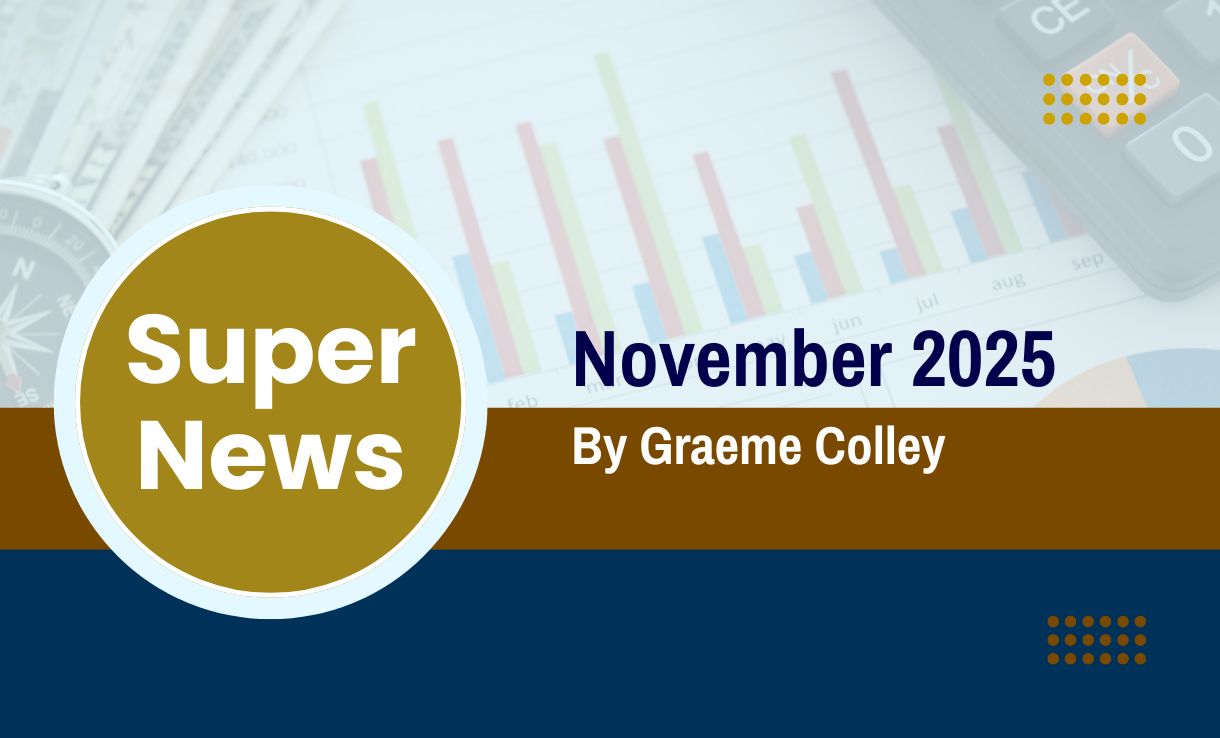
Read the latest updates from Graeme Colley, a respected educator, policy advisor, and technical expert with over 30 years’ experience in taxation and superannuation.
Welcome to some of this month’s roundup of key developments with SMSFs. From ATO compliance initiatives to ASIC audit reviews, make sure you’re up to date.
ASIC recently released Report 817 – Building trust: Auditor compliance with independence and conflict of interest obligations. The report followed ASIC enforcement action taken against several auditors and firms identified as not meeting the independence and conflict of interest requirements.
Nearly one-third of the 48 auditors reviewed breached the mandatory independence requirements. Nine auditors failed to meet rotation requirements for 14 listed clients, and five held prohibited relationships under the Corporations Act. These breaches were found across all sizes of audit firms reviewed.
The source of the breaches was due to poor systems, lack of policies, carelessness, and inadequate quality control. ASIC considered that many auditors adopted a narrow, “tick-box” approach to compliance and failed to consider threats to independence or changing circumstances during audits. Some relied on inappropriate safeguards and did not document how they assessed independence risks.
Examples of threats included excessive non-audit fees—sometimes five times higher than audit fees—and long-standing relationships between auditors and clients, some lasting up to 36 years. ASIC emphasised that independence is fundamental to audit quality and encouraged all auditors to strengthen their practices and policies.
The ATO is taking a tougher stance on late lodgement of SMSF annual returns. About 10% of 2022/23 returns remain outstanding, and similar figures are expected for 2024. The ATO’s experience is that late lodgement often signals illegal early access or other compliance issues.
Consequences for late lodgement include removal of the fund from Super Fund Lookup, which restricts contributions and rollovers, and potentially may result in trustee disqualification.
Continued non-lodgement may trigger harsher penalties. The ATO advises trustees to respond promptly to any ATO correspondence and avoid ignoring compliance letters.
Since 2007, SMSF trustees have been required to complete the ATO trustee declaration within 21 days of appointment and retain it for at least 10 years. Auditors are required to sight the original declaration and keep a copy in their audit file, along with annual confirmations that trustees continue to retain it.
However, many auditors only review copies and request new declarations when originals are lost. The ATO has clarified that if the original cannot be sighted, a new declaration must be signed. A once-off breach can be rectified, but repeated failures require an Auditor Contravention Report (ACR).
Auditors should not be lodging ACRs annually for the same fund due to missing originals if the breach has been rectified.
Breaches of regulation 8.02B of the SIS Regulations, which requires SMSF assets to be valued at market value, accounted for 12% of all reported breaches in 2024–25. Trustees must ensure that valuations for each income year are accurate, in line with the ATO’s valuation guidelines and provide supporting evidence to auditors.
The ATO is using data analytics to identify funds which have reported unchanged asset values year after year, raising concerns about compliance. Failure to meet valuation requirements can result in additional tax liabilities and administrative penalties.
Auditors must assess whether the valuation basis is appropriate and document their findings. Trustees are reminded to provide objective, supportable evidence, including all documents requested by auditors.
The ATO has seen a rise in SMSFs failing to respond correctly to release authorities—documents authorising the release of funds to pay liabilities such as excess contributions, Division 293 tax or possibly Division 296 tax in future. Trustees must release the requested amount and submit a release authority statement within 10 business days of receipt.
Non-compliance can lead to significant penalties. Trustees should regularly check secure mail channels, set reminders, and use SMSF software to track deadlines. Working closely with administrators or tax agents can help ensure timely and accurate responses.
Keeping fund contact details, including electronic service addresses, up to date is essential for receiving important correspondence.
Applications for compassionate release of super (CRS) have surged, particularly for dental treatments. Requests rose from 56,400 in 2021–22 to 90,700 in 2024–25, with costs reaching $104.4 million. Most applicants were aged 34 to 60.
The ATO, in collaboration with AHPRA, is concerned about practitioners supporting inappropriate access, especially for cosmetic procedures. Release on compassionate grounds is only available in limited circumstances, such as treating acute pain or life-threatening conditions, and requires certification from two practitioners.
Practitioners have been warned against providing financial advice without a licence and must ensure medical reports are accurate. New guidance from AHPRA and the Dental and Medical Boards emphasises that treatments should only be certified if necessary.
Writing off loans in SMSFs is being scrutinised by the ATO for breaches of the sole purpose test. Trustees need to demonstrate reasonable efforts to recover funds, including legal advice or evidence of insolvency. Without proper documentation, the ATO may see the transaction as illegal early access.
SMSFs generally cannot claim bad debt deductions unless they are in the business of lending. A capital loss may be claimed if the loan was made with a reasonable expectation of repayment.
If a member illegally accesses super, the funds cannot be returned, and any repayment to the fund will be treated as a new contribution. Trustees may face section 65 penalties, civil and criminal sanctions, disqualification, and fund non-compliance. Early access also breaches preservation standards, making the amount assessable income for the member.
Thank you for reading this months’ update.
If you are looking for more SMSF insights, you can watch Graeme’s latest webinar on demand here.
 |
|||
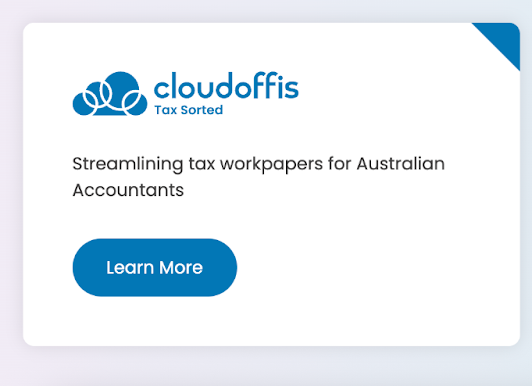 |
 |
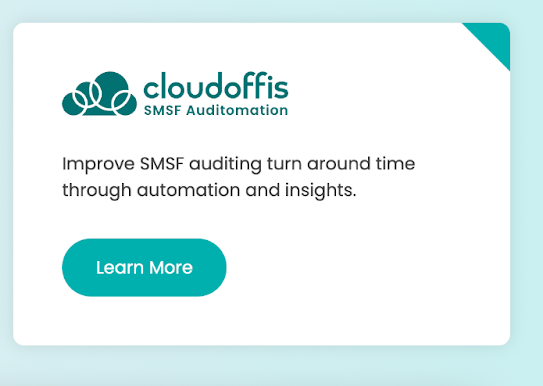 |
|

Welcome to our first-ever Cloudoffis product newsletter – Cloudoffis Pulse, where we bring you the latest product updates across Tax Sorted, SMSF Auditomation and SMSF Sorted.
This month, we’ve some really exciting updates to share with you. Our incredible product team has been working hard to build the products you’ve asked for.
We hope you enjoy this update
| We are pleased to announce that Cloudoffis has successfully attained ISO 27001 certification. At Cloudoffis, safeguarding your data is our top priority. We are proud that we have achieved ISO 27001 certification, the internationally recognised standard for information security management systems (ISMS).
You can learn more about this here. |
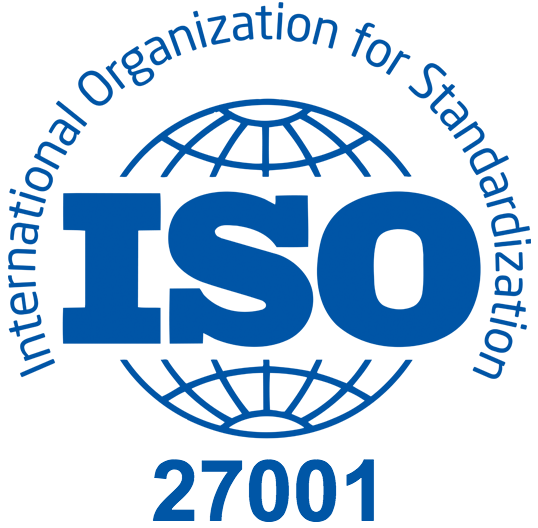 |
If you’re looking to elevate your Cloudoffis experience, book 30 minutes with Jocelyn or Dilnar today.
 |
 |
| Meet Jocelyn | Meet Dilnar |
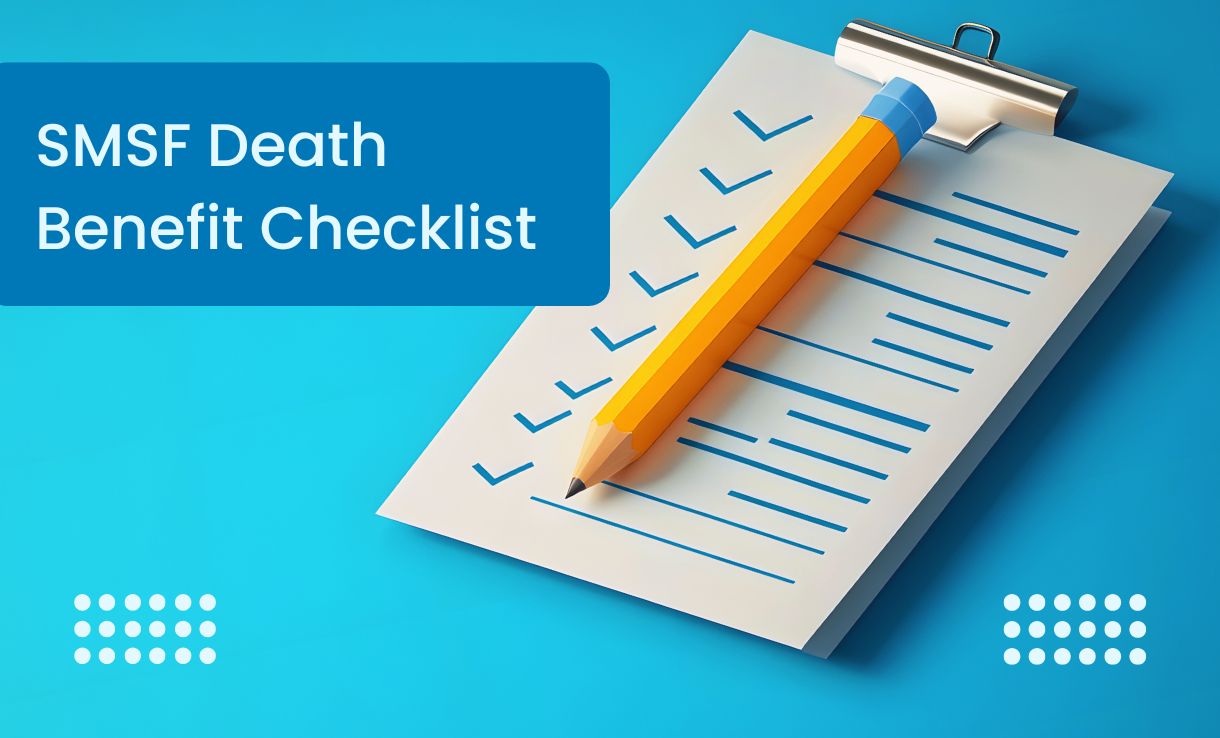
When a member of an SMSF dies a death benefit may become payable to dependents. Also, if the deceased was an individual trustee or director of the corporate trustee a replacement may be required to ensure the fund can continue to operate and benefits are paid.
Here are some questions which may assist to ensure the correct documents are in place and decisions have been made to support the death benefit payment and the replacement of the trustee.
Depending on the client’s situation and the trust deed, there may be many more questions in addition to those below.
Do the governing rules of the fund, such as the fund’s trust deed, have any special requirements in relation to the death of the member or trustee?
Do the governing rules require replacement of the deceased member/trustee or member/director of the corporate trustee with the deceased’s legal personal representative (LPR) before a decision can be made about the payment of the deceased member’s death benefit?
Have trustee minutes and resolutions been made concerning the member’s death, appointment of trustee and payment of benefits to dependants or the member’s estate?
Has the trustee received confirmation of receipt of death benefit or commencement of a death benefit pension by the dependant and/or the estate of the deceased, as relevant?
Have the trustees notified the ATO concerning the amount of tax to be paid in respect of the taxable component of any death benefit lump sum paid to persons who are not death benefit dependants, for example, adult children of the deceased?
Cloudoffis makes preparation, approvals and compliance easy with AI-powered workpapers. As Australia’s leading SaaS provider in the SMSF industry, we bring over 9 years of unparalleled experience.
Pioneers in our field, we take pride in supporting the accounting and auditing community to streamline their workflows and work more efficiently through SMSF Sorted, SMSF Auditomation and Tax Sorted.
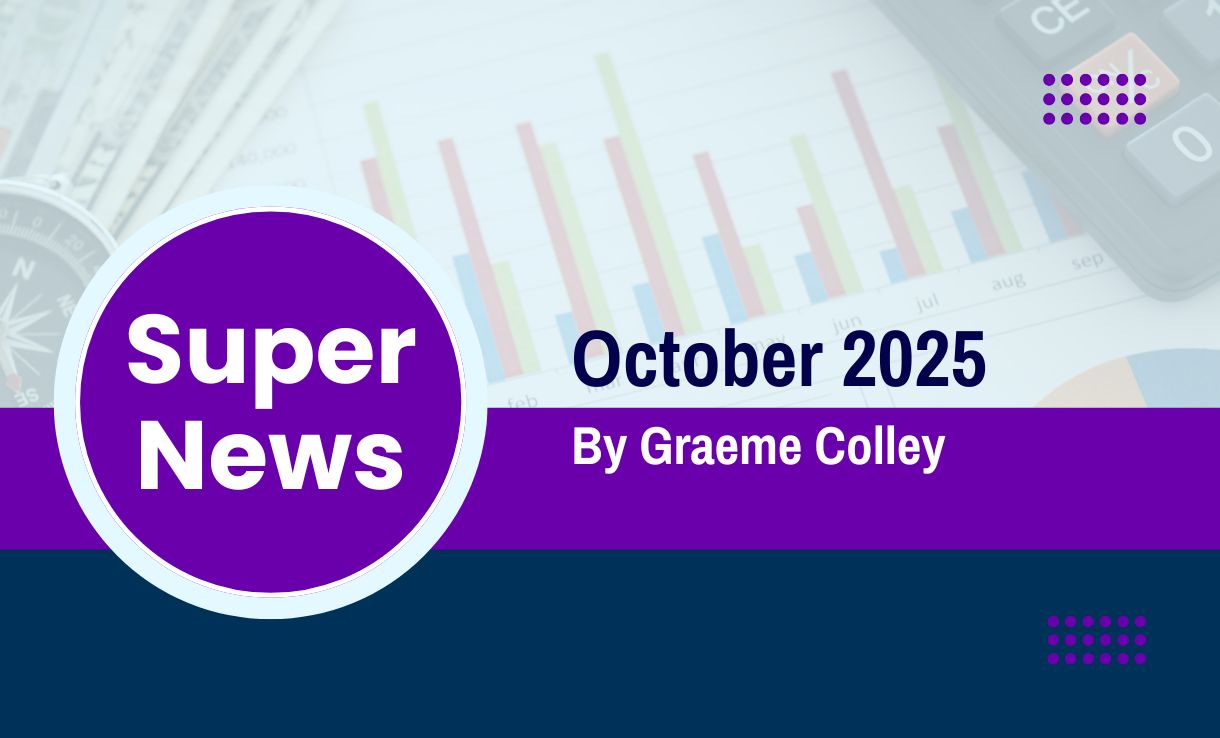
Read the latest updates from Graeme Colley, a respected educator, policy advisor, and technical expert with over 30 years’ experience in taxation and superannuation.
Division 296 amends the income tax law to introduce an additional tax of up to 15% on the increase in a person’s Total Superannuation Balance for the year on balances above $3 million. It was intended to take effect from 1 July 2025.
Based on recent media reports the government has paused progression of the tax. If the legislation does make it into to parliament it may not be in the same form as the original bill which lapsed on 21 July 2025. It may be better to wait until we see whether the legislation will go ahead and, if it does, whether any changes are made to the lapsed bills.
It is rumoured that the $3 million threshold may be indexed which may relieve one of the main issues with the legislation. However, the member’s total superannuation balance which is used to determine the threshold may still include unrealised capital gains in the calculation.
At the moment it’s just wait and see what the government proposes to do.
Taxation Ruling TR 2010/1 Income tax: superannuation contributions has been amended by TR 2010/1A4 to provide the ATO’s view of the link between the non-arm’s length income provisions in section 295-550 of the ITAA ’97 and superannuation contributions. The amendments are relevant for trustees of super funds, particularly SMSFs, in determining whether the non-arm’s length income rules apply when making in specie contributions.
The amendments to TR 2010/1 also cover value shifting arrangements to exclude those occurring from 28 November 2024. But it covers the ATO’s approach to arrangements entered into prior to that date in Appendix 2 of the Ruling.
In relation to determining whether personal contributions are deductible the amended ruling covers the removal of the maximum earnings test which has applied since 1 July 2017.
Law Companion Ruling LCR 2021/2 has been amended by LCR 2021/2A3 to clarify how amendments to section 295-550 of the ITAA ‘97 operate in a scheme where the parties do not deal with each other at arm’s length. It applies where the trustee of small complying superannuation funds, such as an SMSF or SAF incurs non-arm’s length expenditure (or does not incur relevant expenditure) in gaining or producing the fund’s ordinary or statutory income.
The revised ruling provides clarity to a range of NALI/E issues including the difference between services provided as a trustee and in a professional capacity.
The latest SMSF quarterly statistics as at June 2025 were released in early September and highlights the continued growth of SMSFs. The ATO statistics show that there are 653,062 SMSFs which have a total of 1,203,127 members.
During the 2024/25 financial year there was an increase of 38,449 funds, which was a substantial increase over each of the previous three years. Nearly two-thirds of the increase in SMSF memberships has come from the younger age groups. Although over 50% of members are in the 60+ age group.
SMSFs now hold over $1 trillion in assets with the largest asset classes being listed shares and cash and term deposits.
The ATO’s SMSF quarterly statistical reports is available from the ATO website at June 2025 ATO SMSF statistics
The Australian National Audit Office (ANAO), has listed an audit of the ATO’s regulation of SMSFs for the 2025/26 financial year as well as a follow up audit of employer compliance with Superannuation Guarantee. The ANAO last examined the ATO’s management of SMSFs in 2007, and Superannuation Guarantee non-compliance in 2022.
The review of employer compliance with the Superannuation Guarantee requirements, compliments the introduction of the payday super which is due to commence on 1 July 2026.
If you are an SMSF auditor, the ATO must be notified if a reportable contravention under the SIS Act has occurred, is occurring or may occur. The contravention is made by lodging an Auditor Contravention Report (ACR) within 28 days of completing the audit.
However, if the ACR was sent to the ATO because of a genuine error then it can be cancelled. Genuine errors include:
If the information received after lodging the ACR shows that the reported contravention was incorrect, didn’t occur, or has been rectified, a revised ACR should be lodged with the ATO. This can be done by using the ATO’s Online services for business to request a cancellation. If the ATO considers there are valid reasons for cancellation it will reply within 28 days of the request.
In late June 2025 the Australian Financial Complaints Authority (AFCA) handed down a decision Case number: 12-00-1080719 concerning an SMSF which had invested in Contracts for Difference (CFDs) on the basis that it was a wholesale investor for purposes of the Corporations Act 2001.
AFCA came to the conclusion that the SMSF was a retail client because the financial services provided by the financial firms involved related to a beneficial interest in the SMSF, which was a superannuation product, and the SMSF held less than $10 million in net assets as required under the Corporations Act 2001.
The decision in this case changed a longstanding understanding on the basis of an ASIC Media Release 14-191MR Statement on wholesale and retail investors and SMSFs | ASIC . It indicated that if a superannuation fund held less than $10 million in net assets that ASIC would no action if the advice provider determined that the trustee was a wholesale client based on the general net assets test of $2.5 million applying to the individual. As a general rule this was taken to assume that the SMSF could be treated as a wholesale client.
However, in its decision AFCA pointed out that the Media Release 14-191MR is not a definitive statement by ASIC that the general wholesale client test applies to SMSF trustees in relation to financial services these trustees receive. In effect, the release relates to ASIC not taking action in the circumstances indicated in the Media Release.
The AFCA decision was recently confirmed by their lead ombudsman, Shail Singh, and in the AFCA newsletter dated 19 June 2025 that the Corporations Act treats everyone as a retail investor unless you fall into a category of wholesale.
Qualified accountants who have been asked to provide wholesale investor certificate for purposes of Chapter 7 of the Corporations Act must understand when it can be given for an SMSF and that the net value of the fund’s assets are calculated correctly.
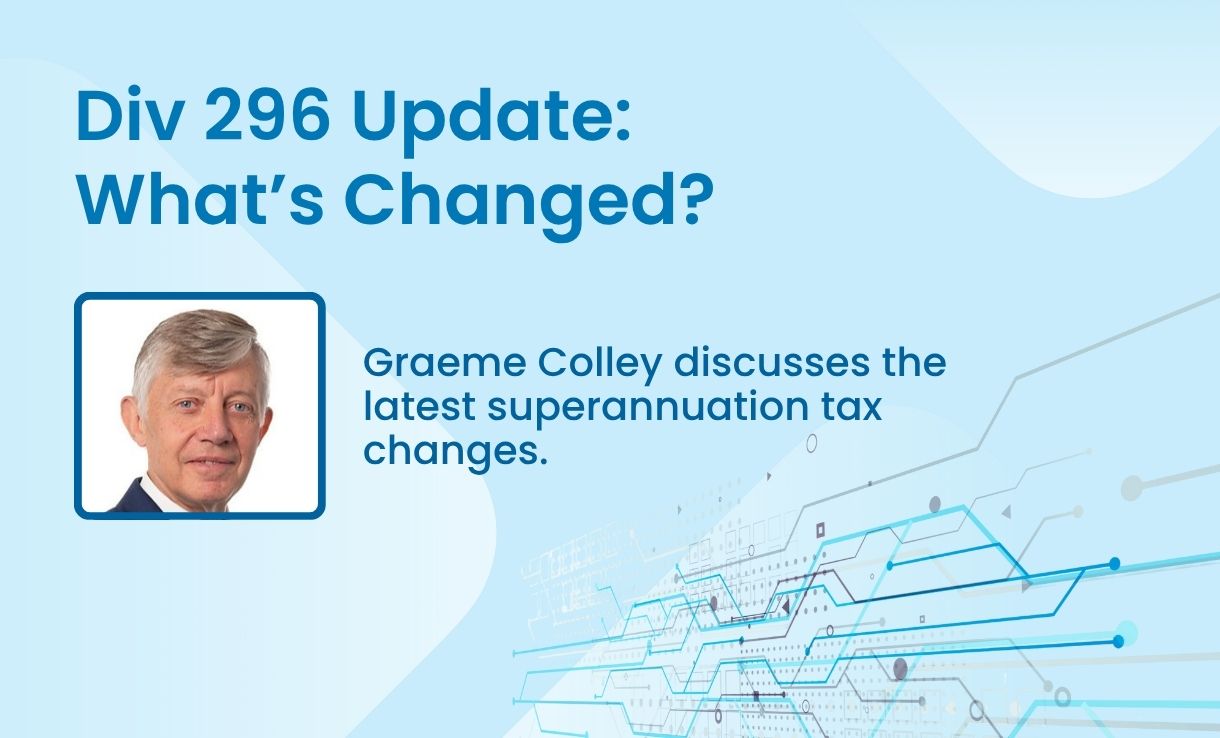
Graeme Colley, who is a well-known expert in SMSFs and the Cloudoffis Independent Consultant, has provided an update on the latest developments for Div 296.
On 13 October, the government announced changes to the Div 296 tax proposal, which taxes increases in a member’s superannuation balance above $3 million. The original proposal was placed under significant pressure by those who were impacted for many reasons. These included no indexation of the $3 million threshold and the taxation of unrealised capital gains.
The proposed changes still maintain the overall design of the legislation, which requires the tax to be paid by the member. However, there are changes to the calculation of the amount to be taxed by excluding unrealised capital gains and introducing two thresholds at which the tax is payable.
The main changes to Div 296 announced by the Treasurer are:
Div 296 tax will apply on balances above $3 million, and a further tax will apply on balances above $3 million.
The two thresholds will be indexed in line with increases in CPI. The $3 million cap will be indexed in increments of $150,000, and the $10 million threshold indexed in increments of $500,000.
The tax rate on the ‘earnings’ for balances above $3 million will be an extra 15% and a further tax of 10% applies if the member’s balance is greater than $10 million. This means that a member who is wholly in the accumulation phase with a balance of between $3 million and $10 million will pay tax equal to 30% of their adjusted ‘income’, and those with a balance of more than $10 million will pay an additional amount equal to 40% of their adjusted ‘income’.
The calculation of a member’s total superannuation balance for Div 296 purposes will be adjusted for contributions, pension payments and other amounts. The announced changes will now exclude unrealised capital gains, which was a controversial feature of the original proposal.
If a member has a total amount in super greater than a threshold, the ATO contacts the relevant fund or funds to get further information so the adjustments can be made. Any ‘earnings’ adjustment will be based on the fund’s taxable income.
The proposed commencement date of the new tax is now 1 July 2026. This means that Div 296 assessments will not be sent out to members until sometime in the 2027-28 financial year at the earliest.
Don’t forget that the government’s announcement on 13 October is not law. There may be further changes when the legislation goes through the parliament, expected early in the new year. As Div 296 is proposed to commence on 1 July 2026 don’t jump at shadows and make ad hoc decisions until the exact wording of the legislation is known and passed.
Further information on the government’s changes can be located on the Treasurer’s website and the Treasury website.
Graeme will provide a detailed overview of the government’s Div 296 announcement at our Q&A webinar on 29 October
You can register for the webinar here.
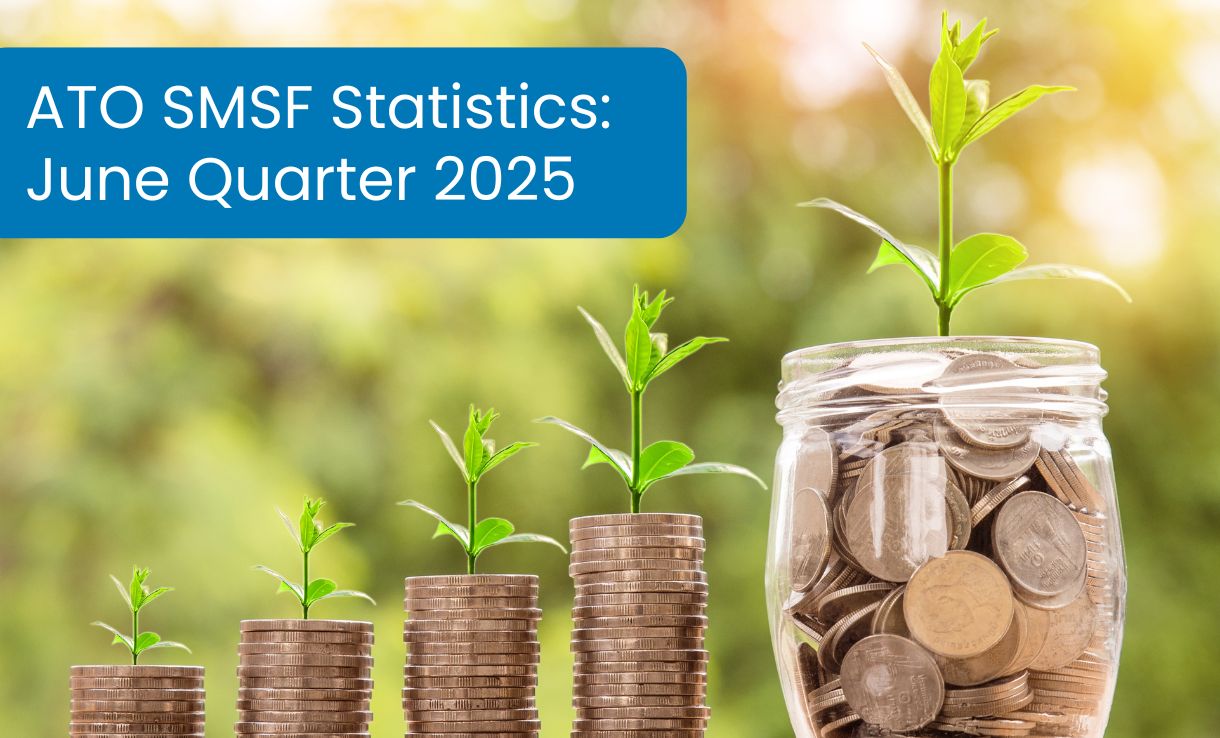
The latest SMSF quarterly statistics as at June 2025 were released in early September and highlight the continued growth of SMSFs. The ATO statistics show that there are 653,062 SMSFs which have a total of 1,203,127 members.
During the 2024/25 financial year, there was an increase of 38,449 funds, which was a substantial increase over each of the previous three years. Nearly two-thirds of the increase in SMSF memberships has come from the younger age groups. Although over 50% of members are in the 60+ age group.
SMSFs now hold over $1 trillion in assets, with the largest asset classes being listed shares, cash and term deposits.
The ATO’s SMSF quarterly statistical reports is available from the ATO website at
June 2025 ATO SMSF statistics
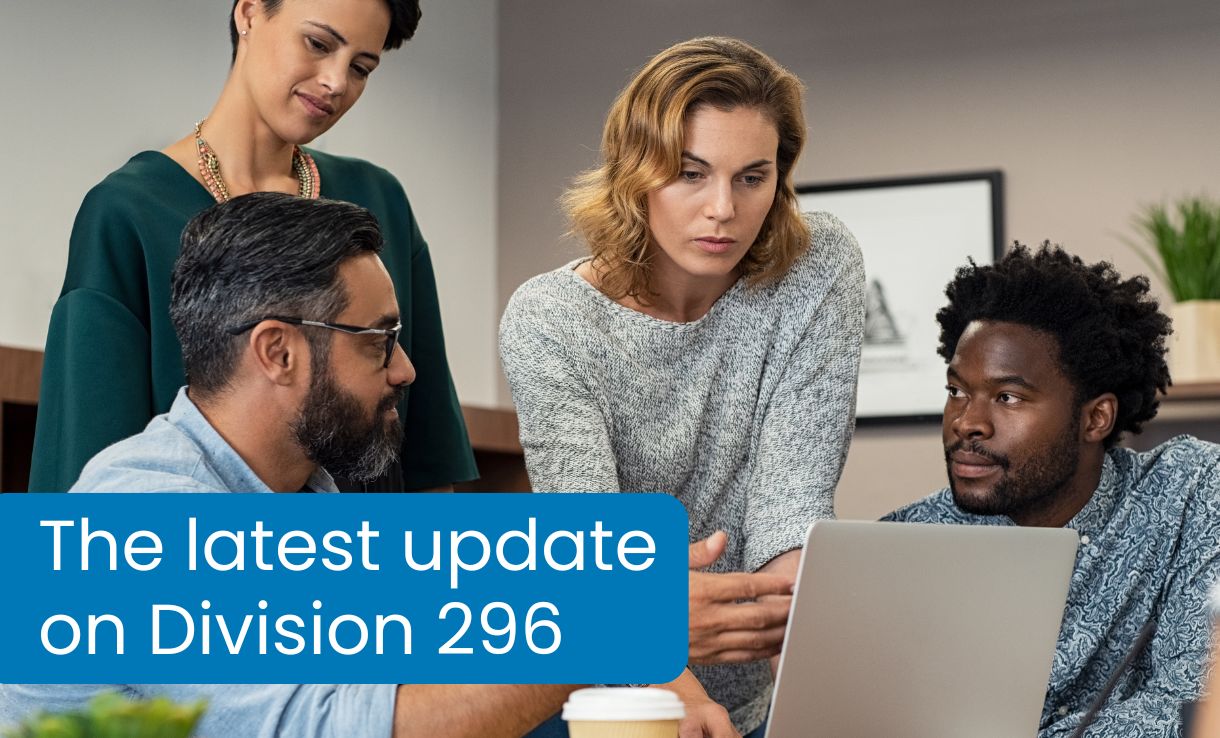
Division 296 refers to a section of the Australian Income Tax Assessment Act 1997 (ITAA 1997). It primarily deals with superannuation and the taxation of certain superannuation-related amounts.
Division 296 amends the income tax law to introduce an additional tax of up to 15% on the increase in a person’s Total Superannuation Balance for the year on balances above $3 million. It was intended to take effect from 1 July 2025.
Based on recent media reports, the government has paused the progression of the tax. If the legislation does make it into parliament, it may not be in the same form as the original bill, which lapsed on 21 July 2025. It may be better to wait until we see whether the legislation will go ahead and, if it does, whether any changes are made to the lapsed bills.
It is rumoured that the $3 million threshold may be indexed, which may relieve one of the main issues with the legislation. However, the member’s total superannuation balance, which is used to determine the threshold, may still include unrealised capital gains in the calculation. At the moment, it’s just wait and see what the government proposes to do.
To keep up to date, keep an eye on the Cloudoffis blog and also these sources below:
https://treasury.gov.au/sites/default/files/2023-09/c2023-443986-em.pdf

Sydney, 16 September 2025: Cloudoffis, Australia’s leading provider of cloud-based audit and compliance technology, has unveiled a series of expansion milestones as it accelerates growth beyond SMSF audit automation and into the wider accounting market.
The momentum is being driven by the rapid uptake of Tax Sorted, Cloudoffis’ newest product, launched in July 2024. Tax Sorted’s plug-and-play ease of use, Excel-based design, and powerful integrations with the ATO, Xero and FYI Docs has given Cloudoffis an immediate foothold across an estimated 60% of the accounting market.
In response to this growth, Cloudoffis has:
“This is a defining moment for Cloudoffis,” said Viral Kanabar, co-founder of Cloudoffis. For nearly a decade, we’ve been an innovator in SMSF audit automation, achieving 22% market share. With Tax Sorted, we’re unlocking the much larger accounting industry, both in Australia and globally. The move to Martin Place, creation of new leadership roles, and our growing team all reflect the scale of our ambition.”
As Chief Strategy Officer, Munden will steer the company’s long-term growth agenda, including opportunities to expand internationally into markets such as the UK and the US. He brings more than a decade of leadership experience scaling software and professional services businesses across Australia and the UK, including senior roles at Apple and Xero, leading transformation teams.
“Tax Sorted is reshaping expectations in the accounting software space,” said Munden. “It’s fast, intuitive and genuinely reduces workloads – helping firms save up to 30 minutes per job and cut review times in half. My focus will be ensuring Cloudoffis captures this momentum and translates it into lasting global impact.”
Melissa Lawlor, Cloudoffis’ new Head of Growth, will lead brand, marketing and customer experience strategy. A seasoned SaaS growth marketer, Lawlor brings more than 15 years of experience from roles at Dext (formerly Receipt Bank) and Deputy, where she specialised in demand generation and scaling customer adoption.
“What makes Tax Sorted so powerful is its accessibility,” said Lawlor. “Accounting firms can be up and running in minutes, which makes change management seamless. That’s a huge differentiator, and I’m excited to help drive the next phase of Cloudoffis’ growth story.”
“We’ve built a product accountants actually love using,” added Manish Sheladia, co-founder of Cloudoffis. “Our vision has always been to create simple, powerful tools that transform compliance. Tax Sorted is proving that vision extends well beyond SMSFs – and we’re just getting started.”
With strong foundations in SMSF audit automation and a rapidly expanding footprint in tax and compliance, Cloudoffis is positioning itself as a global leader in cloud-based accounting solutions.
For more information about Cloudoffis, please visit: https://cloudoffis.com.au
About Cloudoffis
Cloudoffis is Australia’s leading cloud-based audit and compliance platform, trusted by SMSF auditors, administrators, and accountants. With more than 22% market share in SMSF audit automation, Cloudoffis is now transforming tax and compliance workflows through its new Tax Sorted product. By combining deep industry knowledge with innovative, plug-and-play technology, Cloudoffis streamlines processes, reduces risk, and helps practices deliver higher-value client service.
For further information or to arrange interviews, please contact:
Jasmine Turvey, Head of PR – Reverb Media
E: jasmine@reverb-media.com.au
P: 0437 762 320